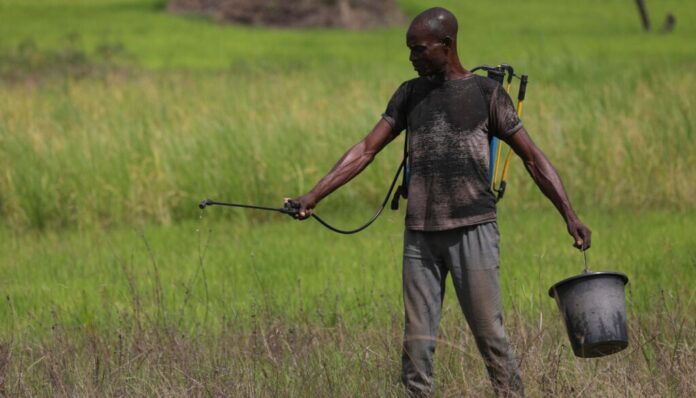Yields in Africa’s smallholder-based farming system have remained stubbornly below the global average for years. The continent is not producing enough of its own food and spends almost $50bn annually importing food, a figure which is predicted to double by 2030 if productivity gains cannot be achieved.
Food price hikes due to spiralling fertiliser and energy prices accompanying the Russia-Ukraine crisis have put this issue centre stage in the past year. A key part of the puzzle is smallholders’ relatively low use of quality seed and fertiliser.
The average consumption of inorganic fertilisers in Africa stands at around 16kg per hectare of nutrients. This compares starkly with an average of 10 times that in South Asia (160 kg per hectare) and over 20 times that in East Asia and the Pacific (331kg per hectare).
Seed and fertiliser subsidies
Subsidy regimes that aim to get cheaper seeds and fertiliser to the smallholder farming base have been a popular policy tool on the continent over recent years.
After falling out of favour in the 1970s and 1980s due to their perceived high-cost, at least eight sub-Saharan countries (Kenya, Malawi, Rwanda, Tanzania, Zambia, Mozambique, Nigeria and Ghana) have reintroduced seed and fertiliser subsidy schemes over the last two decades.
Yet, the impact of seed and fertiliser subsidy models remains contentious, with marked disagreement among agricultural experts and economists around the success of fertiliser and seed subsidies in driving agricultural productivity growth. We need to broaden focus, complementing existing policies with additional measures that can achieve the agricultural yield growth that Africa urgently needs.
Alternative solutions
We need to put in place policies that:
Invest meaningfully in building smallholders’ knowledge base. This means reversing under-investment in agricultural research and building capacity to train farmers in order to get research into use, as Asia-Pacific has done.
Research and training will need to ensure seed and fertilisers are appropriate for the local agronomic zone, crop and soil system, are climate-smart (drought and pest-resilient) and are applied in optimum quantities.
Focus on increasing market links for smallholder farmers to demonstrate to farmers that the demand is there, and that cash rewards accompany an increased use of seed and fertiliser when yields are increased and quality standards for commercial markets met.
Alternatives to seed and fertiliser subsidies
Leverage private sector actors who can ensure seed and fertiliser sales are accompanied by other critical services, such as machine-leasing, aggregation and storage.
Explore government administration of tech systems to improve seed and fertiliser traceability. The extent of counterfeit seed on sale in some African countries makes a farmer’s decision to use their own seed produced in the previous season a rational choice. We know that 30% of the seed on the Ugandan market is identified as counterfeit. Blockchain and smart contracts offer excellent solutions here and are currently being trailed in Rwanda to demonstrate traceability in tantalum supply chains.
Explore seed and fertiliser loan models, such as those in use by the One Acre Fund in Kenya. For an advance of 10% of the value of the seed and fertiliser, farmers sign up for pre-financing of quality seed and fertiliser, coaching in good agricultural practices, and post-harvest advice.
Increase direct sales and tackle the ‘last mile’ problem: The private sector is often best positioned to build a sustainable network that can reach the most remote and underserved areas.
If we saw just a 20% yield increase in the four primary staple crops in sub-Saharan Africa (SSA), this would mean an increase of over 670,000mt of food produced on the continent, which would significantly improve food security.
The opportunities are enormous. With high food price inflation triggering a crisis of affordability on the continent, we need to broaden our toolbox of responses to sustainably deliver the yield improvements that are so critical for the continent, and which will only become more so.








